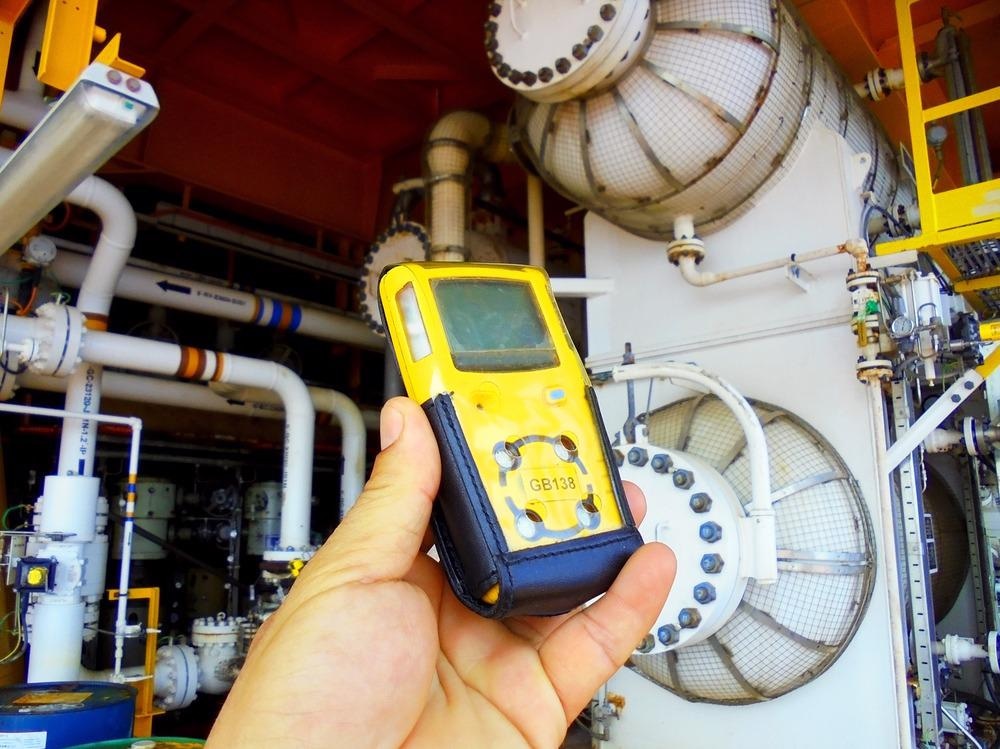In a study published in the Journal of Alloys and Compounds, to investigate the influence of size and morphological characteristics of Palladium (Pd) nanoscale crystals on the performance of stannic oxide (SnO2) in gas sensing, Pd nanoscale crystals of various sizes and structures were fabricated.

Study: Morphology and size effect of Pd nanocrystals on formaldehyde and hydrogen sensing performance of SnO2 based gas sensor. Image Credit: Mr.PK/Shutterstock.com
A set of Pd-SnO2 composite materials were formed by depositing Pd nano-cubes (PdNCs), Pd nanoparticles (PdNPs), Pd octahedron (PdOC), Pd rhombic dodecahedron (PdRD) on the exterior of SnO2 nanosheets.
What are Metal Oxide Semiconductor-based Gas Sensors?
Owing to its small price, great sensitivity and stability, and compatibility with micromachining methods, metal oxide semiconductors (MOS)-based gas sensors have been a widely researched subject. However, their responsiveness and specificity must be increased further to identify certain gases in actual applications.
Building a distinct 3D mesoporous nanoscale morphology with a large specific area, doping different metals or integrating two separate MOSs to produce heterojunctions (p-n, n-n), and imprinting noble metals on the exterior of MOSs are popular techniques for improving the gas detecting effectiveness of MOS-based detectors.
Among them, noble metals have been shown to be the most successful technique for lowering the operating temperature while improving responsiveness, specificity, and response-recovery qualities. Furthermore, the catalysis impact of Pd NPs and the creation of Schottky junctions between Pd and SnO2 may greatly increase hydrogen selectivity.
How do Noble Metal Nanocrystals Impact MOS-based Sensors?
Nanocrystals of noble metals with controllable form have lately received much attention because of their distinctive surface atomic division and high catalytic potential, biomedical, energy storage/conversion, and surface plasmonic characteristics.
Morphology has a significant impact on the specificity and activity of catalysts. Most importantly, by uncovering various crystal faces, noble metal catalysts' performance and specificity may be altered.
The gas-sensitive response in MOS-based sensors is essentially a redox reaction that may be considerably influenced by the catalysis performance of the MOS substances.
Tuning the geometry and uncovered faces of these nanomaterials may thus be a promising technique for improving the detecting capabilities of MOSs-based sensory devices.
The impacts of increased size and distribution on MOS responsiveness have been recorded; however, the impact of the additive's crystalline surface on the gas detecting characteristics of MOS is still limited. As a result, it is critical to investigate the impact of noble metal NP size and shape on MOS-based sensory capabilities.
Important Findings of the Study
In this study, palladium nanocrystals of various sizes and shapes were effectively synthesized and used to alter premade SnO2 NSs.
The impacts of Pd nanocrystal shape and size on SnO2 HCHO and H2 sensory ability and Pd sensitizing process were examined. The sensory behavior of all Pd-SnO2 detectors revealed dual specificity to H2 and HCHO at various temperatures, which can be attributed to the variable activating potential of Pd NPs towards H2 and HCHO at different operating temperatures.
Compared to pure stannic oxide, the addition of palladium reduced the operating temperature and greatly boosted the responsiveness to H2 and HCHO. At 260°C, the SnO2 sensor coated with Pd NPs had the greatest responsiveness and response-recovery qualities.
The improved sensory performance may be attributed to two factors: one is adequate catalysis activity of Pd towards HCHO oxidation, while the second is that the conversion of Pd⇋PdO in air and HCHO or H2 results in a substantial resistance variation of SnO2.
The Final Verdict
Pd nanoparticles’ size and shape-dependent gas sensing capability towards HCHO was observed in Pd-SnO2, with the size impact being more prominent.
The size impact is explained by the fact that smaller Pd particles produce more Schottky connections and have more active spots for oxygen breakdown, and HCHO and H2 oxidation.
The morphology effect is shown by the detecting gas's varied adsorption energies on various crystal surfaces. Although the morphological impact of Pd nanoparticles has no influence on the sensory capability of Pd-SnO2 composites, SnO2 coated with Pd nanocrystals displayed greater stability than Pd NPs.
As a result, decorating the outer faces of MOSs with Pd nanoparticles having adequate size should be effective for detecting H2 and HCHO and shows promise for future gas sensing devices to reduce operating temperature while increasing sensitivity and selectivity.
Continue reading: Nanostructured Thin Films in Gas Sensor Devices: An Overview.
Reference
Li, G., Fan, Y., et al. (2021). Morphology and size effect of Pd nanocrystals on formaldehyde and hydrogen sensing performance of SnO2 based gas sensor. Journal of Alloys and Compounds. Available at: https://doi.org/10.1016/j.jallcom.2022.163765
Disclaimer: The views expressed here are those of the author expressed in their private capacity and do not necessarily represent the views of AZoM.com Limited T/A AZoNetwork the owner and operator of this website. This disclaimer forms part of the Terms and conditions of use of this website.